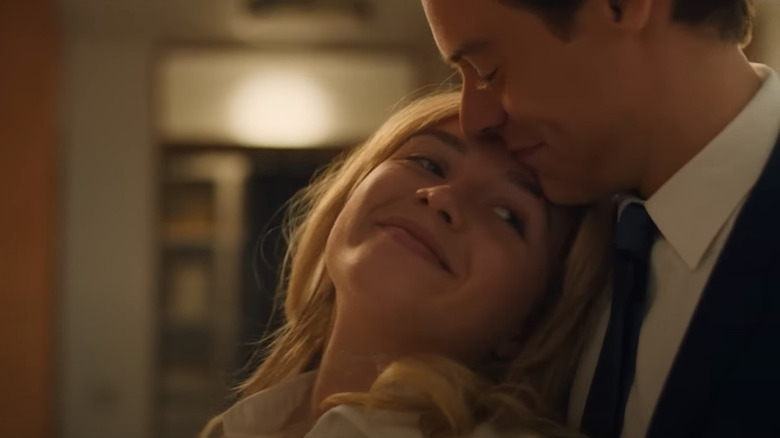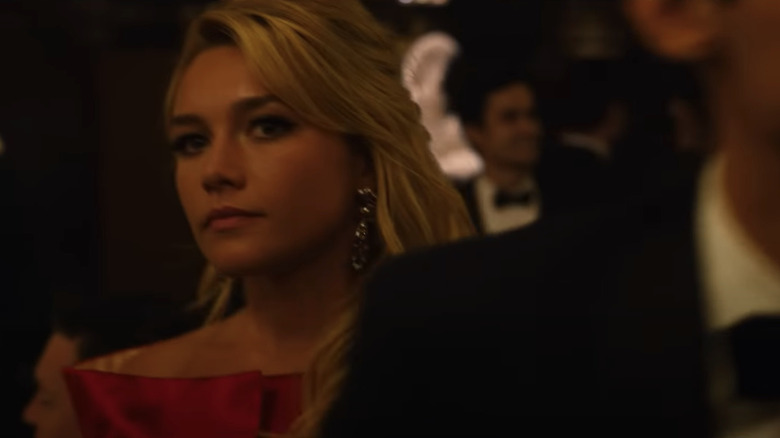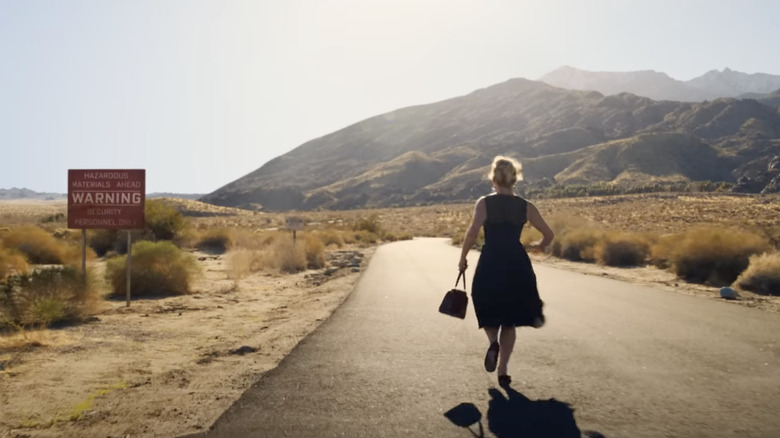Don't Worry Darling Cinematographer Explains What Makes A Good Close-Up [Exclusive]
As the latest entry into the people-realizing-they-don't-belong mini-genre, "Don't Worry, Darling" is tasked with conveying isolation, paranoia, and above all else, fear. One of cinematographer Matthew Libatique's favorite tools for the job? A well-crafted close-up that cuts away the audience's ability to look around, leaving them just as trapped as the protagonist. If executed properly, a close-up can be suffocating. But Libatique has to be careful: a poorly crafted close-up can feel like hand-holding rather than isolation — and no one wants to have their hand held through a psychological thriller.
Fortunately, Libatique has had plenty of time to hone his skills — some of his major credits include "Black Swan" (a staple of isolated-and-delusional cinema), "Straight Outta Compton," and "A Star Is Born." To learn a little more about the tips and tricks he's picked up along the way, /Film writer Jack Giroux recently sat down for an interview with the accomplished cinematographer.
'Where do you want the audience?'
No two scenes are exactly alike, whether in terms of content or the overall effect that the filmmaker is trying to have on her audience. As a result, Libatique recommends being very thoughtful about scale whenever close-ups are used:
"[When you're creating a great close-up,] it's not always in the same place. Sometimes the close-up is just literally a single and sometimes you need to see the person's chest and you need to see their shoulders move because they're physical. And sometimes ... you're deciding between their eyes and their chin ... really where you put the camera is where you're placing the audience. So how close do you want the audience?"
Of course, while a closer-up shot of a twitching eye might be a great way to make viewers uncomfortable, it could just as easily leave them confused — and ruin the immersion. It's no wonder that, like many filmmakers before him, Libatique has thought so much about how a close-up should be positioned.
Choosing the best tool for the job
Matthew Libatique also realizes the importance of knowing when less is more — regardless of whether he's creating purposeful lighting imperfections or shooting close-ups. There's a fine line between tastefully stylized and way-too-much; for Libatique, the key to balancing it is making purposeful decisions. Although he may enjoy his close-ups, he doesn't just blindly turn to them:
"...getting a close-up really to me is conveying a bunch of different things. Obviously, you're putting a camera there and you're cutting to it for emotional value or something that's being said that you want to make a point of, but honestly, the same power could be done with something a bit wider.
On the other hand, Libatique isn't afraid to experiment, either. He's known for playing around with different techniques and has previously stated that he tries to "do different work so that it forces [him] not to repeat [him]self." But whether his cinematography takes on daring risks or plays it safe, he's always careful to think carefully about whether or not his decisions will actually be the best tool for the job — which is no doubt how he's been able to make so many successful hits.


